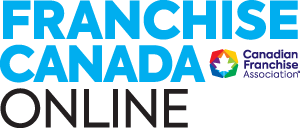RBC Economics’ Macroeconomic Outlook identifies key trends, changes, and concerns for 2022
By Stefanie Ucci
With a new year in front of us, many are feeling hopeful for Canada’s continued economic recovery as countries worldwide look to emerge on the other side of the pandemic.
At the start of 2021, Canadians were eager to receive mass COVID-19 vaccinations to do their part in helping to end the pandemic. Now, at the time of writing, just over 75 per cent of the country’s population have had their second vaccine dose, per the Government of Canada. High vaccination rates have allowed business across Canada to begin fully reopening after more than a year of shutdowns and restrictions, leading to the country’s slow but steady recovery.
The Macroeconomics Outlook published by RBC Economics in December 2021 forecasts a 4.3 per cent growth in Canada’s GDP in 2022. This comes on the heels of a 4.7 per cent gain in 2021, which was achieved gradually and with some obstacles along the way, including pandemic-related closures.
For 2022, “Our baseline assumption is that the elevated level of vaccinations will mean that any future restrictions on activity will be focused and short,” writes RBC. “Outside COVID-related risks, supply chain disruptions, labour shortages, and rising input costs will act as headwinds to growth early next year.”
The Macroeconomics Outlook indicates that the top concern for the coming year will be inflation costs across the country, while the newly discovered Omicron variant of COVID-19 casts a looming shadow of uncertainty for Canadians and the economy.
The good, bad, and ugly for inflation rates in 2022
According to RBC, October 2021 saw Canada’s inflation rate hit a 19-year high, and the Bank of Canada expects this inflation to moderate throughout the course of 2022.
“Given the high level of uncertainty about the degree of excess slack in the economy and timing of easing in inflation pressures, we look for policymakers to be nimble and raise the overnight rate early in the second quarter to head off any persistent increase in inflation expectations,” RBC’s report states.
The authors add, “While the risks to the growth outlook have eased as vaccinations have risen, the risks to the inflation outlook have increased. Base effects associated with reopening, rising commodity prices, policy stimulus and higher input costs have boosted inflation rates.”
These increased rates are also partially due to a scarce supply of goods and services coupled with more purchasing power. Inflation rates are projected to remain above central banks’ targets in 2022, though the Outlook notes that many policymakers “view the recent spike in inflation as temporary,” and are projecting a shift back toward target in the next year.
“Market-based inflation expectations have risen but remain relatively contained, as investors anticipate central bankers will begin to pare back stimulus via higher interest rates,” writes RBC.
With inflation pressures projected to recede, this supports the view that in order to ensure a full economic recovery, stimulus is still needed to support businesses.
As for the Canadian dollar, it’s up 7.5 per cent from its low rate during the pandemic, and compared to the US dollar, is up 9.4 per cent. RBC predicts that the current trade will be around 80 US cents in 2022.
Labour market recovery is on the horizon
The pandemic saw thousands of people across the country face temporary layoffs and terminations, creating a tight and competitive job market for those searching for a new career. However, the end of 2021 saw job creation pick up as businesses reopened their doors to eager customers and needed staff to help with providing products and services.
“By September [2021], employment rolls exceeded pre-pandemic levels and the unemployment rate was one percentage point higher than its pre-pandemic low,” says RBC, noting that employment gains are highest in professional and financial sectors, with high-touch service industries experiencing the most persistent losses.
The authors add, “The strong demand for workers will support further employment gains and a lower unemployment rate in 2022. The hurdle to hiring will be the supply of workers as lower levels of immigration during the pandemic and growing number of workers reaching retirement age weighs on the labour force. A likely result is upward pressure on wages.”
Small businesses see brighter days
When it comes to the spending power of consumers, the Macroeconomics Outlook report notes that “household balance sheets have almost $300 billion in excess savings.” Canadians can use this extra money to repay debt, invest in financial assets or real estate, enjoy goods and services provided by businesses across the country, and more.
That’s great news for small business owners who reported increased optimism as the economy reopened, “with more than half of companies surveyed saying the outlook for sales continued to improve in the third quarter,” per RBC.
However, two-thirds of surveyed companies also reported having difficulties with meeting the intense labour shortages experienced by business owners across the country.
The authors add that, “Businesses are operating with elevated levels of liquidity, and a growing number intend to invest in the year ahead.” Investments for small businesses include machinery, equipment, and technology, which may help support labour shortages by automating processes typically performed by employees as well as allowing companies to grow their ecommerce platforms and gain loyal customers through efficient online sales.
The Macroeconomic Outlook is quick to note that “2022 won’t necessarily be clear sailing.” The authors are “optimistic about the outlook” of the year ahead, “but risks remain elevated given the uncertain path of the virus.” Their baseline assumption for what’s to come is that there will be limited future restrictions on activities, based on the high vaccination rates in countries they closely monitor.
“We expect supply chain bottlenecks and growth in business input costs to gradually ease next year, but labour shortages will remain and keep a cap on near-term GDP growth prospects,” concludes RBC.
Authors
Craig Wright, Chief Economist
Dawn Desjardins, Deputy Chief Economist
Nathan Janzen, member of the macroeconomic analysis group



